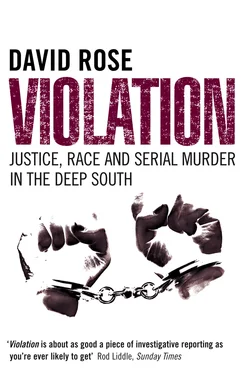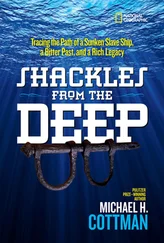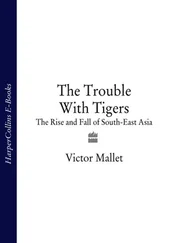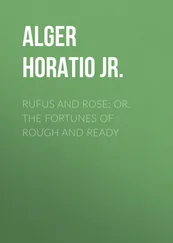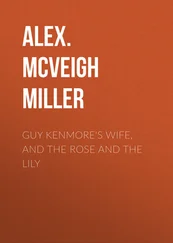The racial connotations of the murders of 1977 were not lost on those who had to investigate them. In a cavernous, oak-panelled suite at his thirty-seventh-floor office in Manhattan, blessed with a dazzling view of Central Park, I interviewed Richard Smith, once a Columbus detective, now the chief executive of the Cendant Corporation’s property division, Coldwell Bankers – the largest real-estate business in the world. The former cop was now responsible for twenty thousand employees, and an annual turnover of $6.5 billion.
The son of a soldier based at Fort Benning, Smith said he’d been faced with a choice of flipping hamburgers or joining the police to pay his way through college. He chose law enforcement, serving from 1973 until 1979 and acquiring two degrees. By 1976 he was a detective, and soon rose to working the robbery-homicide section. Smith spoke in a soothing, understated manner which matched his well-tailored light grey suit and navy shirt. Though he had a very different life now, he stayed in touch with his friends and colleagues from Columbus, which he visited several times a year. He had worked on both the Galloway and the stocking strangler cases, and his obvious intelligence had made him the effective operational leader of the ‘task force’ established to investigate them.
‘Did the fact that it appeared to be an African-American raping and killing white women add to the impact of the crimes?’ I asked.
The easy flow of Smith’s conversation became more broken. ‘Probably. A bit. Yes: that added to the trauma.’ He cleared his throat, and his face began to colour. ‘The old South has great respect and admiration for elderly people, and to see someone treated that way was incredibly offensive. Retired women are supposed to be untouchable people. Nothing is supposed to happen to them. Most of us took it very personally.’
White women shared his sense of revulsion. At the time of the murders, Kathy Spano, who went on to work in Columbus’s courts, was living with her parents in Wynnton. ‘I knew some of the women who died,’ she told me. ‘They were typical Southern gentlewomen, used to being put on a pedestal. I remember them as very gracious women, and also my mother saying, “Oh, it’s awful what they’ve gone through. I cannot imagine laying there as a black man did those things to me.” Because it was a black man, in the eyes of the neighbourhood, it made his crimes much, much worse.’
The body that had to deal with this mayhem, the Columbus Police Department, had not been a happy organisation for many decades. In the 1960s and early seventies, a series of corruption scandals saw officers fired for accepting bribes and taking part in large-scale burglary rings. Earlier, during the 1940s, no one got a job with the CPD without a nod from Fate Leebern, a bootlegging gangster who ran Columbus’s rackets. Among African-Americans, the CPD had had a reputation for racism since the days of Jim Crow, directed both at black Columbus citizens and at the minority of black officers within its ranks, who were forbidden to arrest white suspects, and worked only ‘black beats’. In the late 1960s, just one of the city’s fifty-two black officers had been promoted to sergeant, and none above that rank. Whites received higher pay.
One freezing January night I drove to south Atlanta to meet Robert Leonard, an African-American former Columbus patrolman. A stooped, haunted figure, he told me that together with some of his black colleagues, he had joined the force after returning from service in Vietnam. There they had grown used to something like equality. It was warm inside Leonard’s house, but as he recalled his experience, he shivered.
‘We’d been out there fighting for our country. When we got to the Department, they wouldn’t let us drink from the water fountains. They were reserved for whites. We had to go down to the basement, and drink the water they used for washing patrol cars.’
In 1971, Leonard was going to night school, studying for a degree in police science.
‘There were only two blacks in the class, and it seemed to me that the captain who was taking the class was deliberately marking us down. So a white cop and me, we had a discussion, and agreed to swap papers. I knew my paper was good, and when he turned it in under his name, he got an A. His paper was pretty good too. When I turned it in under my name, I made a C.’
Leonard and the other African-American officers tried to tackle the rampant discrimination by founding a new organisation – the Afro-American Police League. They attempted to make formal representations to the CPD, but its chiefs retaliated swiftly. One black cop was arrested for contempt by his white colleagues when he failed to make a court date, despite having called in sick, said Leonard; another was fired for damaging patrol-car tyres – after risking his life chasing a suspect.
‘They started chopping us off, one by one. It got to the stage where relations between black and white cops had gotten so bad that we were pulling guns on each other. White cops I knew were calling me at home and making threats to me and my mother.’
Finally, in the spring of 1971, Leonard decided ‘it was time to get something done’. He arranged to fly to Washington DC and meet officials from the Justice Department. As he boarded his plane, he realised he was being tailed – by two CPD detectives.
‘I explained to the Justice Department that we wore the flag of the United States on our uniforms, that it stood for liberty and justice, and we weren’t getting any.’ The officials promised to look into it. But soon after Leonard’s return, he was called one night to the Columbus Medical Center, the city’s main hospital, where a doctor had got drunk and was threatening patients and nurses.
‘I told him he was under arrest. He turned to me and said, “Nigger, you can’t say that.” So I cuffed him. Then a captain came and called another white colleague. They suspended me from duty for eight days.’
On the afternoons of 29 and 30 May 1971, Leonard and some of the Afro-American League members held a small demonstration outside the police headquarters. Their protest reached its climax the following day, when ten of them, including Leonard, carefully removed the US flag from their epaulettes, stitch by stitch.
‘We had the media there, and we tried to explain that the flag represented what we’d fought for in Vietnam and couldn’t find in Columbus. There was no liberty or justice inside the CPD, and it was treating black people in the city with brutality. The chief came out of the building and faced us. He looked at us with hate in his eyes and said, “You’re fired.” He went along the line and took our shields and our weapons.’
Later that day, the CPD held a press conference, confirming that Leonard and six others had been dismissed for ‘conduct unbecoming an officer’. Columbus’s Safety Director, Joseph W. Sargis, told reporters: ‘These officers have repetitiously made baseless allegations of unlawful conduct, racism and discrimination against their fellow officers.’ The chief and his men had ‘exercised patience and forbearance concerning the conduct individually and as a group by these officers who call themselves the Afro-American Police League’. Beside him on the platform, two senior cops nodded vigorously – the CPD chief, B.F. McGuffey, and his future successor, Curtis McClung.
The black officers’ dismissal triggered a wave of protest, which was further fuelled in early June when the police shot dead a twenty-year-old African-American whom they claimed had been a robbery suspect. On Saturday, 19 June, the civil rights leader Hosea Williams of the Southern Leadership Christian Council led a demonstration by about a thousand people in support of the fired seven, demanding the reorganisation of the CPD on racially equal lines. Mayor J.R. Allen denounced his proposals as ‘an attack upon this city and its citizens’ by ‘a group of outsiders with no legitimate concern here’. The demands being made by Williams and the former patrolmen ‘could only be described as an extortion note’.
Читать дальше
